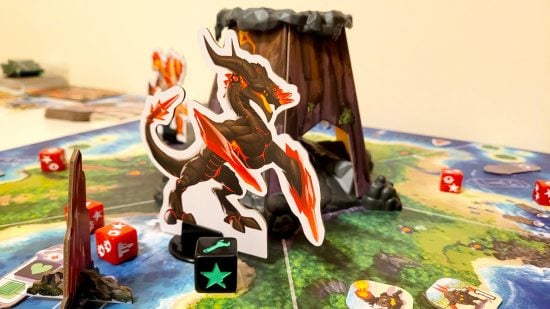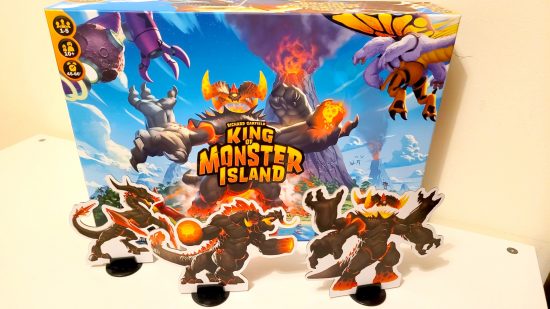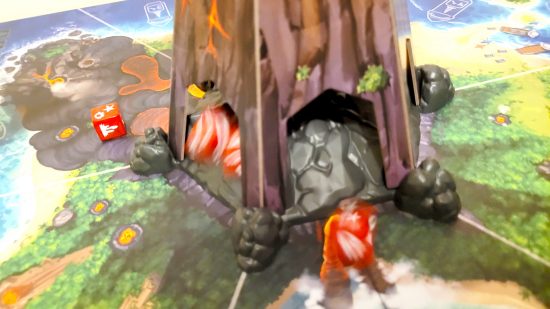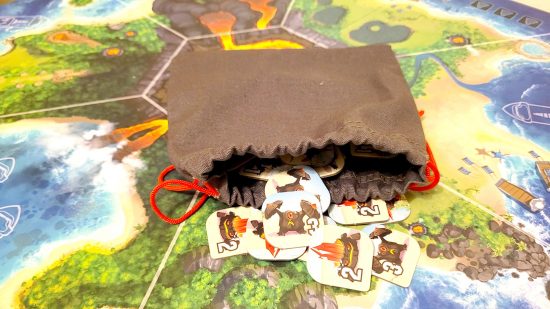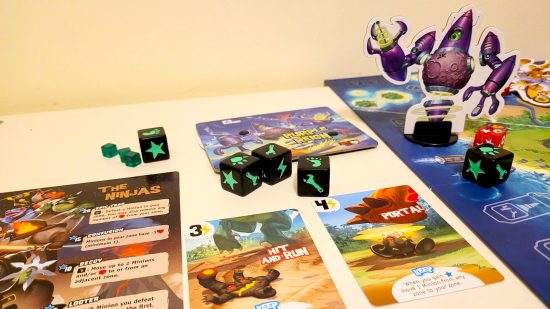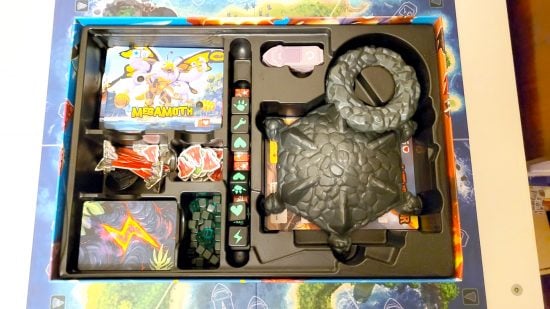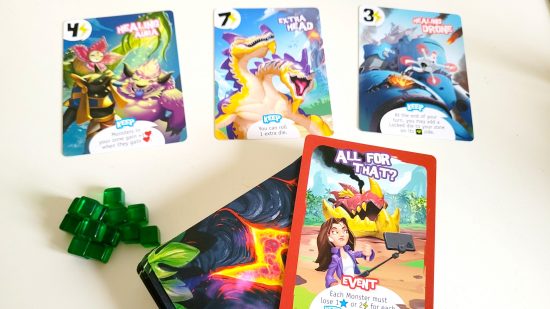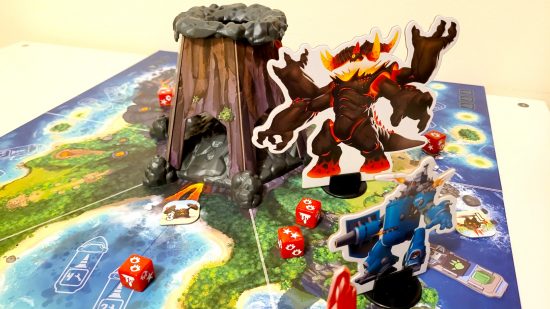Our Verdict
An enjoyable balance of dice, cards and careful decision-making is offset by some regrettable admin time and a lack of excitement.
Designer Richard Garfield is best known for creating Magic: the Gathering, but one of his other top titles is the superb dice chucker King of Tokyo – now reborn in a cooperative board game form as King of Monster Island. Players still take on the role of giant kaiju – but now, instead of smashing up a city, they’re working together to smash up an even bigger monster on a volcano-crowned tropical isle, and thus find out who’ll truly be crowned… er… King of Monster Island.
The game does retain the zany cartoon art style and huge cardboard standees of its famous predecessor (which only just misses out on a spot in our guide to the best board games available, it’s that good). You get a choice of three foes of increasing difficulty, each of which has an easier and harder side to their monster sheet.
These sheets detail the actions each beast can take every turn, and they get more actions (making them more dangerous) as the game goes on. Each boss monster also gets a set number of dice, which you’ll drop into the delightful volcano dice tower. This splits the dice randomly across the six board segments (and, often, also sends them careening off the table).
Dice in a boss’s segment get activated and can do various things – like adding randomly drawn minions to the board, building crystal pylons, and increasing the number of actions the boss can take. Pylons decrease your options on the space and, if you allow three to be built, it’s game over.
Minions can also help build pylons, but mostly they do damage to players, or shield other minions from damage. As you can probably appreciate from this rundown, there’s a fair amount of upkeep and admin to keep the game flowing – and that slows down the action.
After the upkeep’s dealt with, it’s the turn of one player to take their actions. This is based on the familiar Yahtzee-style dice rolling that was the core of King of Tokyo. You get three rolls, and can keep any dice faces you like each time.
While some dice faces – like claws to damage enemies, hearts to heal, and energy you can accumulate to buy upgrades – will be familiar to veterans of the previous game, others are new. Feet allow you to move board segments; spanners let you buy support tiles which can be activated for an extra dice face; and stars give you experience rather than points.
Experience is a new concept for King of Monster Island. You don’t just control a monster, but also an ‘ally’, such as the Media or the Military. Your ally doesn’t have a direct board presence; rather, like the boss, you can activate them for useful support abilities that get more powerful as your stars accumulate. This split in your upgrade path between cubes (to buy cards) and stars (to improve your allies) offers some interesting decision-making as you look for synergies between the two.
The core loop of the game is very much the standard approach to cooperative play. You’re facing multiple threats – your monsters’ health; pylons; minions – while battling against a timer of the boss increasing in power each turn. It’s a standard template for a good reason: it provides a fun game experience that slowly cranks up the tension – although, as ever, it’s susceptible to an experienced player bossing everyone around rather than fostering true cooperation.
Its secret weapons in this regard are the two sets of dice. Dropping boss dice into the volcano is both a fun and effective gimmick, although we’ve seen something similar before in The Loop. The random scatter that results makes the boss’ behaviour unpredictable, yet also gives good players a chance to plan ahead because star results on the player’s dice can be used to take boss dice off the board. Players can also lock unused dice faces from their roll on their board space for other players to use later, another powerful tool to leverage in forward planning.
Dice rolls add excitement too, of course – but, when it comes to the player turns, the powerful thrill of those three precious rerolls has diminished compared with King of Tokyo. In that game, a particularly lucky set of rolls could swing the game massively in your favour, even put you in contention out of nowhere. As a result, there was a real temptation to push your luck that even had spectators on the edge of their seats.
While there’s an echo of the same fun in King of Monster Island, there’s just not as much riding on each roll – at least not until the late stages – and the game often rewards you for playing it safe.
That said, there’s definitely more to think about when it comes to what you’re aiming for with each roll, and how you apply the results you eventually get.
Taking down the boss may be the way to win – but pursuing the big bad while leaving minions and pylons to proliferate is a fast route to defeat. You’ll need to take risks with your rolls and think on your feet, switching plans if, say, you don’t get the feet you need to move to your target zone. Locking dice and using hearts to heal other monsters provides a satisfying sense of teamwork.
Still, dice often rule the day, and the new event cards in the upgrade deck give the game additional unpredictability, resulting in a fair blend of chaos and strategy. Like the original game, it should be good for family play, although what it gains in a lack of competitive strife, it loses in a longer play time and additional rules and overhead.
Overall, the shift to cooperative play doesn’t quite suit the mechanics at the core of the series. But, while it may never be the monster hit its predecessor was, the cheerful presentation and variety of game styles in King of Monster Island should still ensure you can have a whale of a time.
